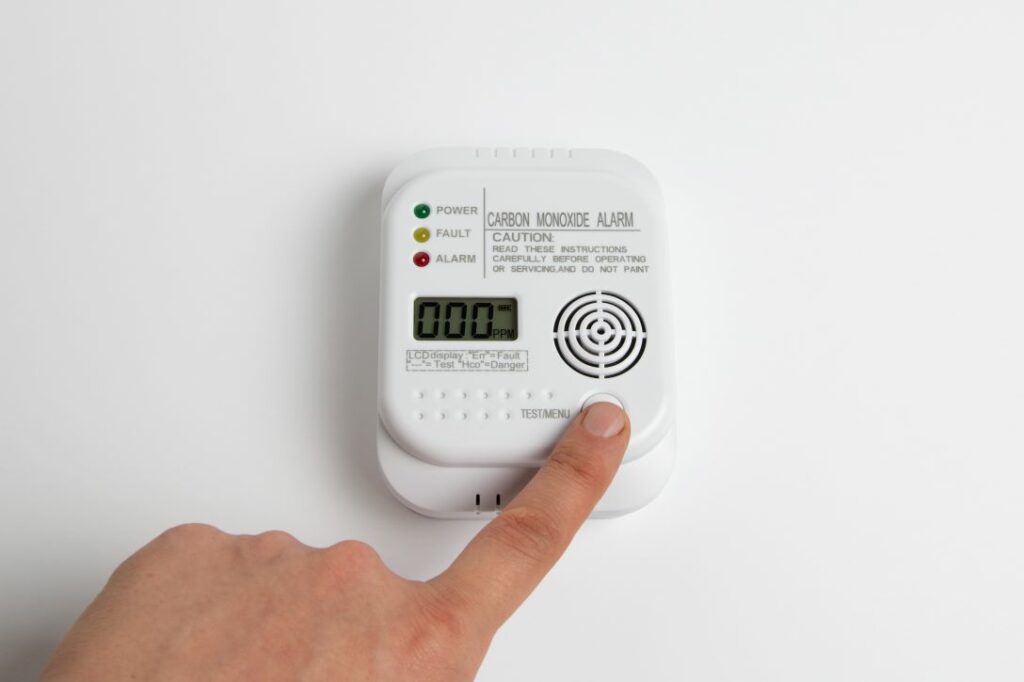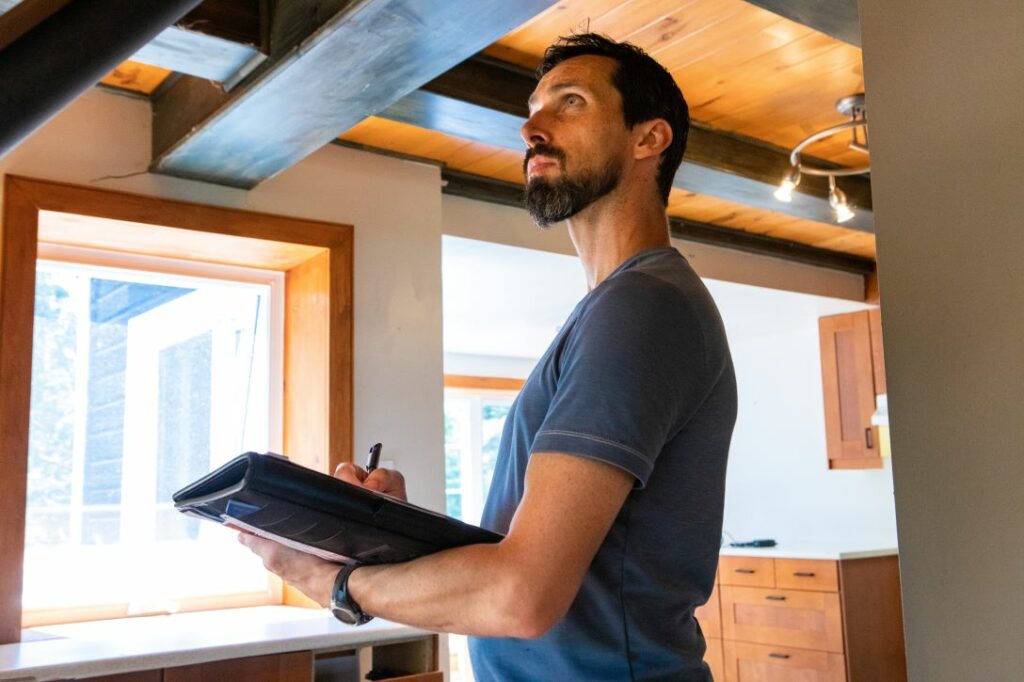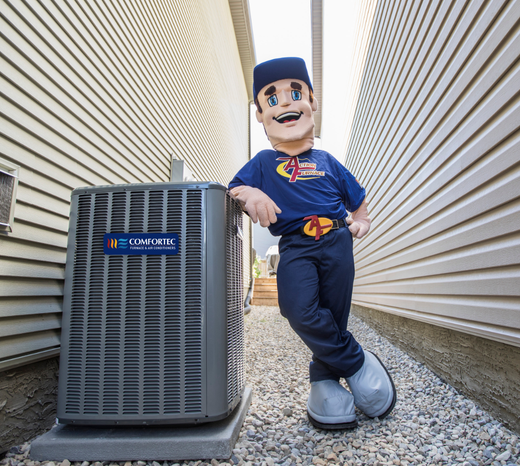Did you know Canadians spend about 90% of their time indoors? Spending the vast majority of our time indoors means the air quality in our homes is e...
Did you know Canadians spend about 90% of their time indoors? Spending the vast majority of our time indoors means the air quality in our homes is extremely important. You may not think about the air quality in your home very often, but monitoring and maintaining the air quality in your home can help you and your family stay healthy.
There are many steps you can take to ensure the air you're breathing is of good quality. Follow this guide to learn how to test it yourself, and find out what to do if you’re struggling with air quality problems!
See also: How to Improve Your Indoor Air Quality

Step 1: Evaluate Your Health
Most people don’t start thinking about their indoor air quality (IAQ) until physical health symptoms start appearing. These symptoms often look like:
- Irritated or itchy eyes
- Stuffy or runny nose
- Frequent sneezing
- Fatigue or dizziness
- Frequent headaches
- Troubles breathing or wheezing, or shortness of breath
- Increased coughing or inflammation in the respiratory tract
- Increased symptoms of existing conditions such as asthma, or heart and lung conditions
If you or your family are experiencing any of the above health symptoms, your home could have air quality issues. The next step will be to test your home’s air quality more thoroughly.
Step 2: Obtain an Indoor Air Quality Monitor
One of the best ways to test your indoor air quality (IAQ) is to purchase an IAQ monitor. These devices are used to measure particulate matter in the areas where they’re placed. They assess the levels of oxygen, carbon dioxide, carbon monoxide, and other vaporous gasses within the home. Afterwards, they will give you an overall reading of the air quality in your home.
Step 3: Test For Mould in Your Home
If the IAQ monitor reports poor results, you will want to check your home for any mould buildup. Mould usually grows in areas where water builds-up. The first sign of mould is a musty smell, followed by discoloured spots on floors or walls.
You can purchase a mould testing kit, but you can also look for mould visually. Common areas where mould grows include:
- Under sinks
- Behind the fridge or freezer
- Under any carpeting that’s been wet
- Behind drywall that’s been wet, commonly because of flooding
- In ventilation ducts where moisture can buildup
A simple water and bleach solution can help to identify whether a spot is just dirty, or if it’s mould growth. Using a 1 part bleach and 16 part water solution, you can dab an area that you suspect is mould. If it lightens quickly and disappears, it’s most likely mould.
Mould can be removed by using a 1 part bleach to 10 part water solution and saturating an area with mould growth without rinsing the area afterward. However, if you suspect your home has mould in places you’re unaware of, or it keeps coming back after cleaning, we recommend hiring professionals to take care of the issue.

Step 4: Test Your Carbon Monoxide Detector
Known as the silent killer, carbon monoxide can be lethal if you’re exposed to it for too long. The simplest way to test for carbon monoxide in your home is to use a carbon monoxide alarm.
Most homes already have these alarms installed, but if your home doesn’t have one equipped, we recommend installing one as soon as possible to ensure safety for you and your family.
To test your carbon monoxide detector, you’ll want to hold down the test button located on your device. Hold this button for at least 20 seconds or until the alarm sounds. This means your carbon monoxide detector is in working condition and should alert you if there are significant levels of carbon monoxide present in your home.
Step 5: Test For Radon Levels
Never heard of radon? You’re not alone. High radon levels aren’t nearly as common as carbon monoxide, but radon is found in every home across Canada—especially ones built on soil with higher levels of uranium in the ground beneath them.
Very low levels of radon gasses do not require any action, but higher levels that enter into a home through cracks in the foundation, walls, construction joints, floor drains, or any other areas exposed to the underlying ground can be a problem. Test your home for radon levels using a long-term (90+ day) test kit and call a certified radon mitigation professional to help you lower the levels if they’re high enough to be a health risk.
Step 6: Check Your HVAC System
Your HVAC system plays a vital role in keeping your home’s air quality high. If your HVAC system isn’t operating properly, gas emissions can leak into your home and decrease the IAQ. If you feel like your HVAC system needs servicing, repairs, or a replacement to improve your IAQ, call one of our expert comfort advisors for assistance!
Another step you can take in improving your IAQ is to frequently replace the filter in your HVAC system. Replacing this filter not only helps maintain the efficiency of the HVAC system itself, but also reduces the amount of debris, dirt, pollen, and other small particles in your home—increasing the IAQ and allowing you to breathe easier.
Step 7: Check for Asbestos in Your Home
Many older homes used asbestos due to its fire-resistant properties. However, this material has been linked to many health concerns, including mesothelioma. If asbestos fibres are disturbed, they can move through the air and be inhaled, causing severe health problems while significantly reducing the air quality in your home.
If you have asbestos in your home, do not try to remove it yourself. Asbestos removal should only be done by professionals!
Step 8: Keep Informed About Construction Projects Near You
Unless your home is completely sealed off from the outside world, air pollutants from the outdoors are sure to be found in your home. Construction projects can cause debris, dust, and gasses to enter into your home. Although you can’t prevent this entirely, you can make sure your windows and doors are correctly sealed during these projects to help prevent pollutants from getting inside.
Step 9: Get an Air Purifier
Once the steps above have increased your IAQ, it's time to maintain it. One simple thing you can do is to invest in an air purifier. These work by removing pollutants and contaminants from the air. Purified air then gets cycled back into the home for a better breathing experience.
At Action Furnace we have air purifiers that work with any budget and any home. Get a free quote on a new air purifier here.

Call a Professional for Reliable Air Quality Improvements
If after following these steps you notice your IAQ is still reading on the poor side, we recommend hiring a professional to assess your home. A professional can find more sources of pollutants and provide targeted advice on the next steps to take.
At Action Furnace, our comfort advisors are more than happy to assist you with improving the indoor air quality of your home—contact us for more information!



